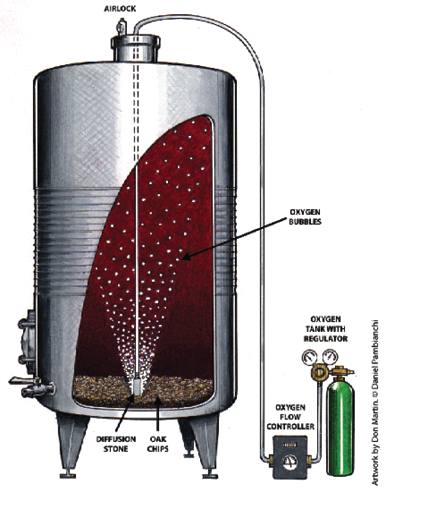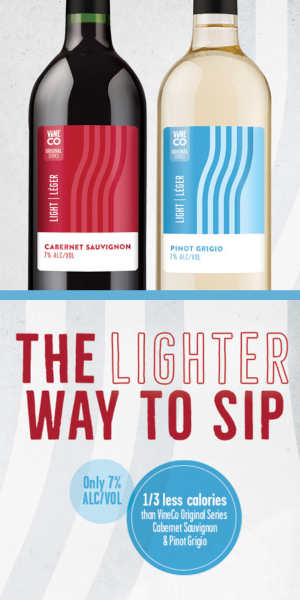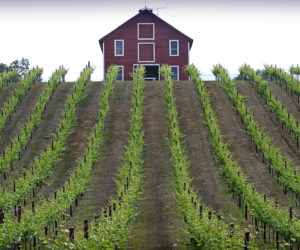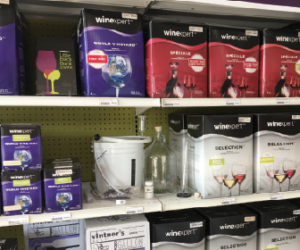Inexperienced amateur winemakers are often misled thinking that making red wine is easier — or at least more foolproof — than making white wine because reds are better protected by polyphenols from the effects of oxidation. The result: Tired, orangey (and even brown) colored, lifeless reds.
Making great red wine is indeed more challenging as we now have to contend with those polyphenols, namely tannins and anthocyanins, in the overall balancing act and structure; for example, tannins can be very harsh if not managed against acidity.
Tannins provide structure and mouthfeel while anthocyanins impart color ranging from purple to red. But tannins (and other polyphenols) and anthocyanins interact extensively with sulfite, dissolved oxygen (DO), metal ions from iron and copper, and acetaldehyde (from yeast fermentation and ethanol oxidation) to affect color, color stability, wine structure and aging potential. Add in the mix of oak aromas and flavors, wood tannins and the small, slow ingress of oxygen into oak barrels and you can appreciate the level of complexity in making that elusive great red wine.
We will do away with expensive oak barrels and inject managed quantities of oxygen into wine using a technique called micro-oxygenation, or micro-ox, in conjunction with “natural” antioxidants and reduce the use of sulfites.
Antioxidants in/for reds
Tannins in reds have roughly four times the “antioxidative power” (or more correctly “reduction potential”) of SO2, and so, red winemaking is naturally predisposed for reduced use of sulfites. The reduction potential of wine tannins is only surpassed by that of glutathione, or GSH, a naturally occurring compound in grapes made up of three amino acids. The reduction potential of GSH is more than five times that of SO2 and three times that of ascorbic acid (AA). There are commercial inactivated yeast formulations that include GSH although they are very difficult to source.
But the most significant difference between GSH and SO2/AA is that SO2/AA transform (reduce) brown-colored polyphenols (known as quinones) back to their colorless form, which are then available to oxidize again during winemaking or wine aging, resulting in premature browning. GSH, on the other hand, combines with those brown-colored quinones to form what are called grape reaction products (GRP), which do not react further.
And, whereas ascorbic acid is fine in white winemaking, it is not recommended in red winemaking as it can interfere with polyphenol chemistry and produce hydrogen peroxide (H2O2) — yes, the first-aid kind we’re all familiar with. H2O2 is a powerful oxidizing agent which can wreak havoc in red wine including anthocyanin bleaching. So we’ll replace the use of ascorbic acid (and SO2) with gallotannins. Gallotannins too may be difficult to source but they are well worth the effort particularly that they are a much more natural match for reds.
Micro-oxygenation
Micro-ox is an increasingly popular red winemaking technique introduced in the mid-1990s. It emulates the effects of the infinitesimally small amount of oxygen exchanged over long periods of time in and out of barrels but can be accomplished relatively quickly in tanks (and carboys). It not only allows wine to develop and age gracefully while softening tannins, stabilizing phenols, improving color development, and increasing flavor complexity but it has the benefit of reducing reductive sulfur off-odors. It also reduces green, herbaceous aromas more rapidly than in conventional barrel aging in those green-prone Cabernet varieties.
So micro-ox is about controlled and measurable oxygenation compared to other techniques such as racking/splashing and delestage practiced during active fermentation. The technique involves injecting oxygen in the order of 1–3 mg/L (ppm) per month in controlled fashion in conjunction with oak adjuncts, such as staves or oak chips.
Micro-ox is easily implemented using a gas diffuser and an oxygen tank equipped with a regulator. The challenge in a home winemaking context is measuring and controlling small amounts of oxygen transferred into the wine; it requires the use of some very precise (expensive) equipment. So we’ll adapt the technique for our use here and do away with the control box. One adaptation is tasting the wine on a regularly basis, e.g. every couple of days, to ensure that everything is progressing as expected without any off-aromas or flavors developing.
 The oxygen tank must be equipped with a regulator to deliver a steady stream of pure oxygen gas. You’ll need to open the regulator slightly to deliver the tiniest amount of oxygen through the diffusion stone. A one-micron (1-m) diffusion stone is ideal to deliver tiny bubbles, which will help oxygen dissolve into the wine, although you may only be able to find a 2-m stone — that will work fine. The stone should be set at the lowest point in the carboy or tank, just above the expected level of future lees precipitation and above the layer of oak.
The oxygen tank must be equipped with a regulator to deliver a steady stream of pure oxygen gas. You’ll need to open the regulator slightly to deliver the tiniest amount of oxygen through the diffusion stone. A one-micron (1-m) diffusion stone is ideal to deliver tiny bubbles, which will help oxygen dissolve into the wine, although you may only be able to find a 2-m stone — that will work fine. The stone should be set at the lowest point in the carboy or tank, just above the expected level of future lees precipitation and above the layer of oak.
Have an airlock installed on the carboy bung or tank top to protect against excessive oxygen buildup; however, if that is the case and you see airlock activity, then you are injecting too much oxygen. Excessive oxygen will also cause any free SO2 (if sulfite is added) to drop quickly below protective levels, oxidize the wine, and promote bacterial growth and volatile acidity. And remember: Oxygen solubility increases and rate of consumption decreases at lower temperature, and so, micro-ox is best performed at cellar temperature, i.e. 13 °C or 55 °F.
The use of oak tannins in micro-ox is critical; oak tannins, i.e. gallotannins and ellagitannins, have very different molecular structures compared to grape tannins, which make them ideal in this application as they are more efficiently oxidized resulting in improved wine stability. We’ll use oak chips as these can be easily added and removed from carboys and tanks.
Red winemaking protocol
The red winemaking protocol proposed here is for crafting medium- to full-bodied reds from med/high-polyphenol varieties such as Cabs, Merlot, Pinot Noir, Nebbiolo and Sangiovese, just to name a few. It is not intended for light, fruity young reds meant for early consumption; the techniques proposed here would negatively impact the low polyphenol content in these wines. But if you still want to craft a red with medium body from a low-polyphenol variety, just extend the maceration time to extract more tannins.
As in all protocols, it is absolutely imperative that you remove any and all rotten grapes; otherwise, oxidative (laccase) enzymes will cause browning in must and can linger on in wine to continue their browning effects. This is even more critical than in white winemaking, and particularly in Pinot Noir.
Note: Where no dosage is specified on the use of additives, please follow the manufacturer’s product instructions.
Crush and destem grapes into a vat and immediately add pectinase to help break down pectins. If you want to perform a cold soak maceration and if you have experience in handling dry ice (CO2 in solid form), immediately add some to the must to slow down enzymatic oxidation of anthocyanins — the Aussies are really big on this technique. Otherwise, immediately inoculate with a previously prepared yeast starter culture supplemented with nutrients to initiate alcoholic fermentation as quickly as possible. Remember: We have not added any sulfite yet, so microbiological control is critical here. And notice that since we have not added any sulfite, this will minimize extraction of harsher tannins by sulfite.
At one-third sugar depletion, add yeast nutrients to ensure a good fermentation to the end and to minimize the risk of hydrogen sulfide (H2S) forming. Fermentation should proceed quickly and last no more than 5–7 days. And since we want to control the amount of oxygen the wine receives, you can forego macro-oxygenation techniques such as racking/splashing.
Let fermentation run its course to the end before pressing so as to extract the maximum tannins possible. So if you usually conduct the malolactic fermentation (MLF) just before the end of alcoholic fermentation (AF), it is recommended postponing the MLF until after the AF completes.
Once the AF is complete, promptly proceed with pressing, transfer the wine to carboys or, ideally, to a single tank, making sure that it is topped up and immediately add gallotannins at a rate of up 50 mg/L. Inoculate the wine with cultured Oenococcus oeni bacteria to initiate the MLF; keep the wine at 18–22 °C (65–72 °F) and protected from any oxygen ingress during the MLF.
Once the MLF is complete, drop the temperature as much as possible to keep spoilage micro-organisms in check, and add 200–500 mg/L of lysozyme, particularly if you are dealing with a high-pH wine, in which case, consider adding sulfite.
Add oak chips (medium toast are best) to the carboy or tank at a rate of 2–4 g/L, and add glucanase to help break down colloids and glucan to improve fining and filterability. Age the wine on the lees for several weeks or months making sure to stir the lees 2–3 times per week being extra vigilant to keep spoilage micro-organisms at bay — that means storing the wine at cold temperature and working under very strict sanitary conditions. And keep an eye, er, nose, out for H2S production — a common occurrence in wines aged excessively on the lees or without stirring.
Depending on your micro-ox setup and oxygen delivery rate, perform micro-ox over several days, a couple of weeks or even a month. As oxygen may not get dissolved and distributed evenly throughout the wine volume, a thorough but very gentle (to avoid introducing oxygen) stirring is recommended prior to tasting. Taste the wine every couple of days or so to assess development and overall quality. There should be no orange or brown color — the color should remain a lively red.
Once the micro-ox operation is complete, filter the wine down to a fine grade, e.g. 0.5 μm (nominal) — you will first need to do a coarse filtration followed by a medium filtration. The fine filtration will reduce yeast, lactic acid bacteria (LAB) and other micro-organism population that could cause unwanted effects and possibly spoilage. Do not add any sorbate if you conducted an MLF as you risk your wine developing a smell of geraniums.
Store the wine at or well below cellar temperature until bottling making sure all containers are topped up and protected from any oxygen ingress. You can perform a light fining with egg whites or your preferred fining agent before bottling, or you can simply rack the wine every 3–6 months if you intend to age it for an extended period of time. Add gallotannins at a rate of 20–40 mg/L every time you rack.
Bottling
Bottling is the most critical operation here as it involves high oxygen ingress. The less DO in the wine at bottling, the less sulfite you need to add. Work quickly and treat the wine gently, avoiding any high-oxygen intake procedures such as splashing.
Sulfite (the first addition!) the wine to between 0.8–1.0 molecular SO2 based on pH, add 50 mg/L of gallotannins, and bottle immediately using high-grade natural or technical corks. In all cases, you will need a minimum of 10 mg/L of free SO2, the typical amount consumed in the bottle over a 24-month period under normal cellaring conditions.







